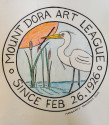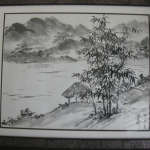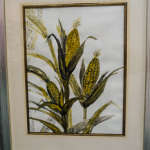Jane Luong Moody, Artist and Instructor
I love the outdoors. The variety and beauty within nature’s landscapes have always been affinities of mine, especially the rewards that flowers bring.
My goal is to bridge the gap between traditional 中國水墨畫 (sumi-e style) techniques and twenty-first century contemporary art.
The art of Sumi-e originated in China about 6000 years ago as calligraphy. Calligraphy led to painting. The first ink painting on silk dates back to about 200 B.C. During the Southern Sung Dynasty (A.D.1127 – 1276), great advances were made in the styles of painting that emphasized a direct feeling for life and spontaneity in the brushwork.
In many parts of Western society today, Sumi-e means ink painting derived from traditional Asian brush techniques. The sizes of the paintings varied, along with the amount of detail portrayed. Above all, Chinese artists followed their own inclination, ignoring ideas from the West, such as perspective, and absorbing the culture of their conquerors.
I have been painting Sumi-e style since the mid ‘80’s. My personal style is a combination of traditional Chinese and contemporary Western techniques to bring landscapes and floral scenes to life. I practice with a variety of materials, using “zung-chi” and black ink to achieve the level of detail necessary in my artworks.
I practice a “spiritual” style. I painted subjects such as the “Four Gentlemen” (plum, orchid, bamboo, and chrysanthemum) for their virtuous qualities. Chinese brush painters strive to achieve qi (chi), often described as the “essence” in their paintings. This can be acquired by following certain principles, or simply by being in the right frame of mind for the subject.
Sumi-e is like a beautiful flowing circle -- the circle of life. Every step of the way is filled with wonderful surprises, you never know how and when it will end, but prepared with right frame of mind, ink, a good brush and a sturdy hand, you will get fantastic results.
My motto is: "Fail? Try again!" Much like the American saying: "Where there is a will, there is a way!"
The Four Treasures of the Studio Introduction: The brush, the ink stick, the ink stone and the paper.
"THE BRUSH DANCES AND THE INK SINGS"




